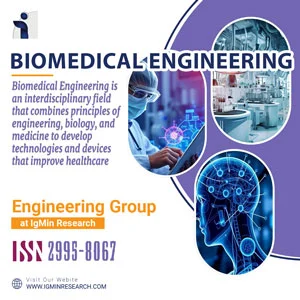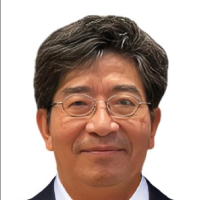Open Access Policy refers to a set of principles and guidelines aimed at providing unrestricted access to scholarly research and literature. It promotes the free availability and unrestricted use of research outputs, enabling researchers, students, and the general public to access, read, download, and distribute scholarly articles without financial or legal barriers. In this response, I will provide you with an overview of the history and latest resolutions related to Open Access Policy.
About
Welcome to the Biomedical Engineering section of IgMin Research: STEM | A Multidisciplinary Journal. Our mission is to provide a platform for researchers, academics, and professionals in the field of biomedical engineering to share their cutting-edge research, insights, and innovations. As a multidisciplinary journal, we aim to bridge the gap between engineering and medical sciences, fostering collaboration and advancing the frontiers of healthcare technology.
In an ever-evolving world, Biomedical Engineering stands at the crossroads of engineering and medicine, driving transformative changes in healthcare. Our section explores the dynamic intersection of technology and biology, where engineers and medical professionals collaborate to create innovative solutions for diagnosing, treating, and preventing medical conditions. From medical imaging and wearable devices to prosthetics and regenerative medicine, the Biomedical Engineering section covers a wide spectrum of topics that redefine the boundaries of medical possibilities.
Editors
Engineering Group (6)
Open Access Policy refers to a set of principles and guidelines aimed at providing unrestricted access to scholarly research and literature. It promotes the free availability and unrestricted use of research outputs, enabling researchers, students, and the general public to access, read, download, and distribute scholarly articles without financial or legal barriers. In this response, I will provide you with an overview of the history and latest resolutions related to Open Access Policy.
Open Access Policy refers to a set of principles and guidelines aimed at providing unrestricted access to scholarly research and literature. It promotes the free availability and unrestricted use of research outputs, enabling researchers, students, and the general public to access, read, download, and distribute scholarly articles without financial or legal barriers. In this response, I will provide you with an overview of the history and latest resolutions related to Open Access Policy.
Open Access Policy refers to a set of principles and guidelines aimed at providing unrestricted access to scholarly research and literature. It promotes the free availability and unrestricted use of research outputs, enabling researchers, students, and the general public to access, read, download, and distribute scholarly articles without financial or legal barriers. In this response, I will provide you with an overview of the history and latest resolutions related to Open Access Policy.
Open Access Policy refers to a set of principles and guidelines aimed at providing unrestricted access to scholarly research and literature. It promotes the free availability and unrestricted use of research outputs, enabling researchers, students, and the general public to access, read, download, and distribute scholarly articles without financial or legal barriers. In this response, I will provide you with an overview of the history and latest resolutions related to Open Access Policy.
Open Access Policy refers to a set of principles and guidelines aimed at providing unrestricted access to scholarly research and literature. It promotes the free availability and unrestricted use of research outputs, enabling researchers, students, and the general public to access, read, download, and distribute scholarly articles without financial or legal barriers. In this response, I will provide you with an overview of the history and latest resolutions related to Open Access Policy.

Why publish with us?
Global Visibility – Indexed in major databases
Fast Peer Review – Decision within 14–21 days
Open Access – Maximize readership and citation
Multidisciplinary Scope – Biology, Medicine and Engineering
Editorial Board Excellence – Global experts involved
University Library Indexing – Via OCLC
Permanent Archiving – CrossRef DOI
APC – Affordable APCs with discounts
Citation – High Citation Potential
Which articles are now trending?
Research Articles
- Application of Virtual Reality (VR) in Facility Management Competency-based Training (CBT) in the Era of Industrie 5.0
- Designing a Compact High-precision Positioner with Large Stroke Capability for Nanoindentation Devices
- Current Oscillations and Resonances in Nanocrystals of Narrow-gap Semiconductors
- The Influence of Low Pesticide Doses on Fusarium Molds
- Investigation of Lateral Vibrations in Turbine-generator Unit 5 of the Inga 2 Hydroelectric Power Plant
- Contamination in Heat Exchangers: Types, Energy Effects and Prevention Methods
Advertisement


























